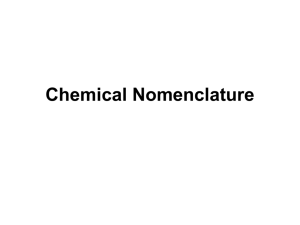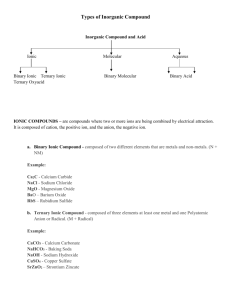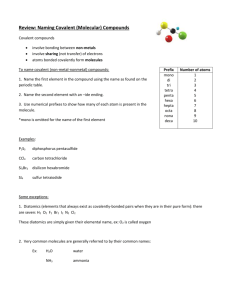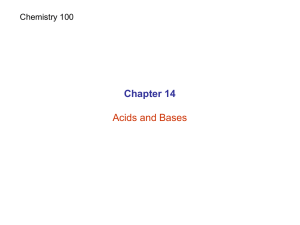A id Acids
advertisement
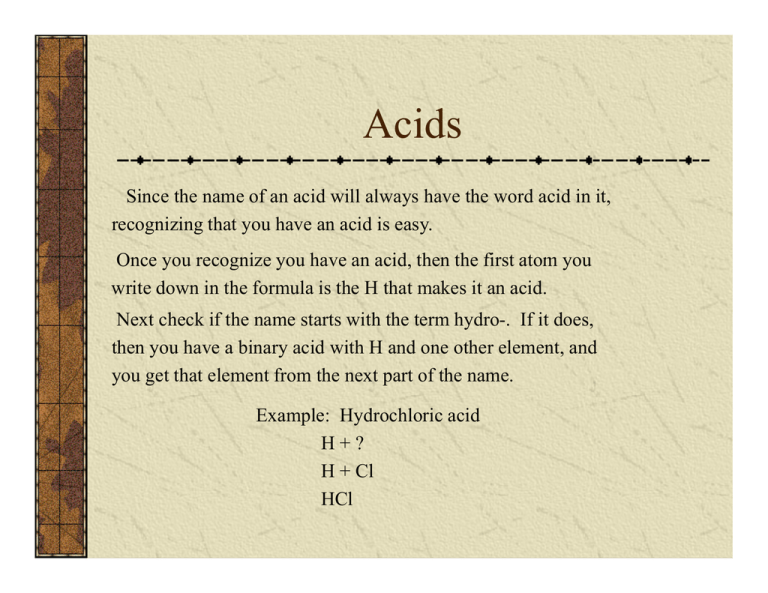
A id Acids Since the name of an acid will always have the word acid in it, recognizing that you have an acid is easy. Once you recognize you have an acid, acid then the first atom you write down in the formula is the H that makes it an acid. Next check if the name starts with the term hydro-. If it does, then you have a binary acid with H and one other element, and you get that element from the next part of the name. Example: l Hydrochloric d hl i acid id H+? H + Cl HCl A id Acids One note on the previous answer HCl T h i ll a compoundd isn’t Technically i ’ an acid id until il it i is i dissolved di l d in i water, so the more correct formula here is HCl(aq), where the (aq) implies the compound has been dissolved in water. water A id Acids . Iff the h name ddoesn’t start with i h the h hydro-, h d then h it i is i an oxyacid id and it is derived from one of the complex ions you memorized that contain oxygen. oxygen If the name of the oxyacid ends in –ic, ic then name of the complex ion ends in –ate. If the name of the oxyacid ends in –ous, ous, then the name of the complex ion ends in –ite ite Example p 1: Nitric acid Oxy acid comes from the nitrate ion Nitrate ion is NO3So the acid is HNO3(aq) A id Acids . Example 2: Nitrous acid O acid Oxy id comes from f the h nitrite i i ion i Nitrite ion is NO2So the acid is HNO2(aq) A id Acids . Example 3: Sulfuric acid O acid Oxy id comes from f the h sulfate lf ion i Sulfate ion is SO4-2 Note here, here acids, acids just like ionic compounds must zero net charge so we have to balance the negative charge of the anion With the +1 charge g of the H. Thus we need 2 H’s to make this a neutral compound H2SO4(aq) A id Acids . Problems to try Hydrofluoric acid Ph h i acid Phosphoric id Sulfurous acid Acetic acid Carbonic acid Hydrobromic y acid (Answers on next slide) A id Acids . Problems to try Hydrofluoric acid Ph h i acid Phosphoric id Sulfurous acid Acetic acid Carbonic acid Hydrobromic y acid HF(aq) H3PO4(aq) ( ) H2SO3(aq) HC2H3O2(aq) H2CO3(aq) HBr ((aq) q)
